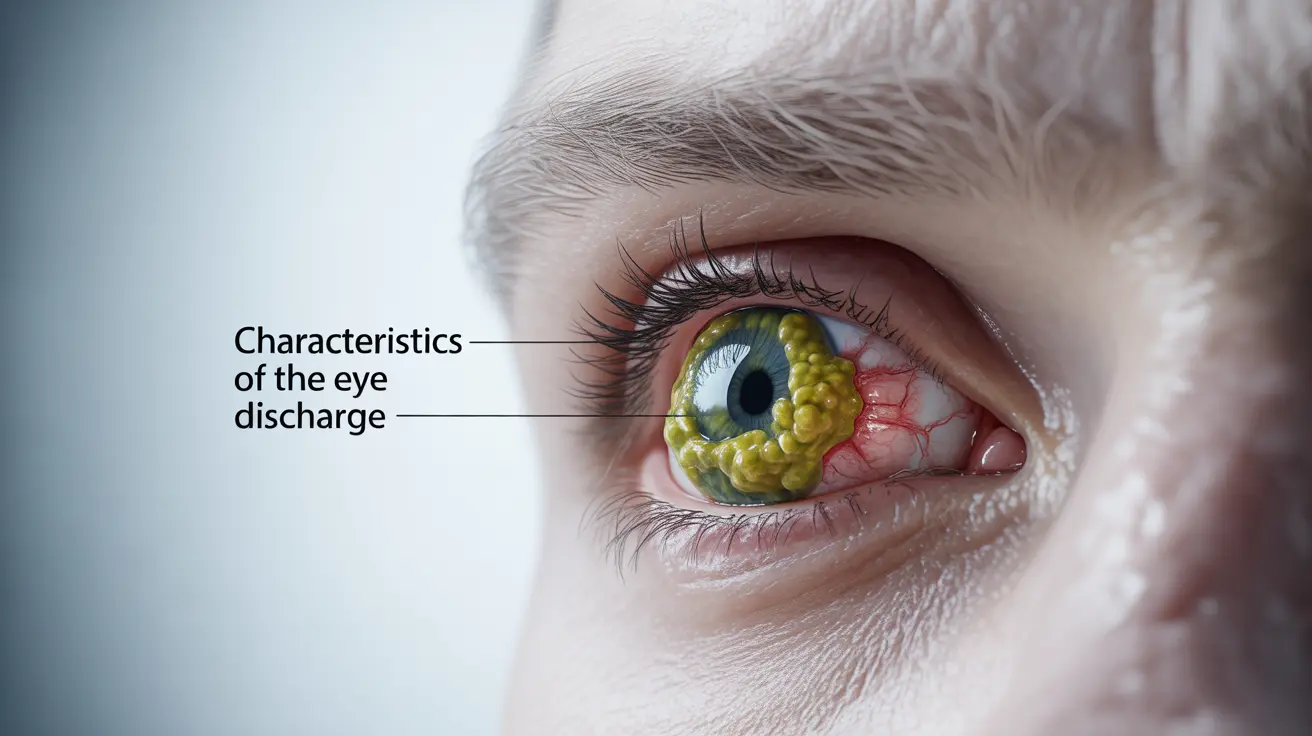Finding pus coming out of your eye can be both concerning and uncomfortable. This type of eye discharge is often a sign of an infection or other underlying condition that requires attention. Understanding the causes, symptoms, and appropriate treatments can help you address this issue effectively and prevent potential complications.
While some eye discharge is normal, particularly upon waking, the presence of pus requires careful evaluation and often medical intervention. This article will explore the common causes, treatment options, and important warning signs that indicate when to seek professional medical care.
Common Causes of Eye Pus and Discharge
Several conditions can lead to pus coming out of the eye, with bacterial conjunctivitis being the most common cause. Here are the primary conditions associated with purulent eye discharge:
Bacterial Conjunctivitis
This highly contagious eye infection causes inflammation of the conjunctiva, the clear membrane covering the eye. Common symptoms include:
- Yellow or green pus-like discharge
- Redness in one or both eyes
- Crusty eyelids, especially in the morning
- Eye irritation and discomfort
Other Infections
Additional infections that may cause eye pus include:
- Staphylococcal or streptococcal eye infections
- Corneal infections (keratitis)
- Dacryocystitis (infection of the tear duct)
Identifying the Type of Eye Infection
The characteristics of eye discharge can help determine the underlying cause:
- Bacterial infections typically produce thick, yellow-green discharge
- Viral infections usually create watery or thin white discharge
- Allergic reactions tend to cause clear, watery discharge
Treatment Options
The appropriate treatment depends on the underlying cause of the eye pus. Common treatments include:
Medical Treatments
- Antibiotic eye drops or ointments for bacterial infections
- Warm compresses to help clear discharge
- Artificial tears to flush out irritants
- Prescription medications for specific conditions
Home Care Measures
While receiving medical treatment, these self-care steps can help manage symptoms:
- Gently clean the affected eye with sterile saline solution
- Use clean, warm compresses several times daily
- Avoid touching or rubbing the eyes
- Wash hands frequently to prevent spread
Warning Signs and When to Seek Medical Care
Seek immediate medical attention if you experience:
- Severe eye pain or sensitivity to light
- Changes in vision
- Swelling around the eye
- Fever along with eye symptoms
- Symptoms that worsen or don't improve within 24-48 hours
Prevention Strategies
To reduce your risk of developing eye infections that cause pus:
- Practice good hand hygiene
- Avoid touching or rubbing your eyes
- Never share eye makeup or contact lenses
- Replace eye makeup regularly
- Remove contact lenses before sleeping
Frequently Asked Questions
What are the common causes of pus coming out of the eye? The most common cause is bacterial conjunctivitis, followed by other bacterial infections of the eye or tear ducts. Less commonly, it may be due to blocked tear ducts or severe allergic reactions.
How can I tell if the pus in my eye is due to bacterial conjunctivitis or another infection? Bacterial conjunctivitis typically produces thick, yellow-green discharge and affects one or both eyes. The eyes usually appear red and feel irritated. However, only a healthcare provider can make a definitive diagnosis.
What treatments are effective for clearing pus discharge from the eye? Antibiotic eye drops or ointments are most effective for bacterial infections. Warm compresses and gentle cleaning with sterile saline can help manage symptoms. The specific treatment depends on the underlying cause.
When should I see a doctor if I have pus coming from my eye? Seek medical attention if you have severe pain, vision changes, fever, or if symptoms don't improve within 24-48 hours. Also see a doctor if the discharge is thick and yellow-green, as this often indicates a bacterial infection requiring antibiotics.
How can I prevent eye infections that cause pus and discharge? Practice good hygiene by washing hands frequently, avoiding touching your eyes, not sharing eye makeup or towels, and keeping contact lenses clean. Remove contact lenses before sleeping and replace eye makeup regularly.




